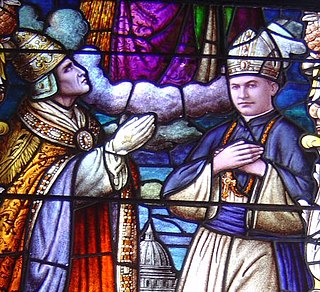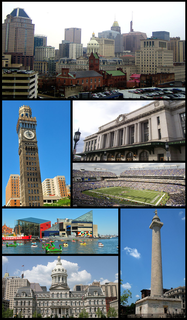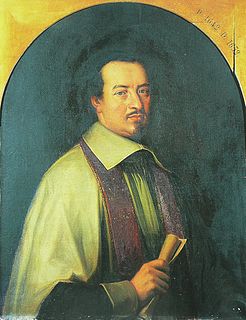
The Society of the Priests of Saint-Sulpice is a society of apostolic life of the Catholic Church named for the Church of Saint-Sulpice, Paris, in turn named for Sulpitius the Pious, where they were founded. Typically, priests become members of the Society of the Priests of St. Sulpice only after ordination and some years of pastoral work. The purpose of the society is mainly the education of priests and to some extent parish work. As their main role is the education of those preparing to become members of the presbyterate, Sulpicians place great emphasis on the academic and spiritual formation of their own members, who commit themselves to undergoing lifelong development in these areas. The Society is divided into three provinces, operating in various countries: the Province of France, Canada, and the United States.
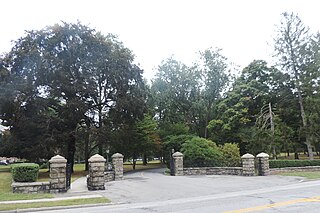
St. Joseph's Seminary and College, sometimes referred to as Dunwoodie after the Yonkers, New York neighborhood it is located in, is the major seminary of the Archdiocese of New York. Its primary mission is to form men for the priesthood in the Catholic Church. It educates men destined to serve within the Archdiocese and other archdioceses and dioceses both in the United States and abroad.

The University of Saint Mary of the Lake, also called Mundelein Seminary, is the principal seminary and school of theology for the formation of priests in the Roman Catholic Archdiocese of Chicago, governed from Chicago, Illinois, in the United States. Chartered by the Illinois General Assembly in 1844, it has the longest continuous academic charter in the state of Illinois.

Édouard Gagnon, PSS, OC was a Canadian Roman Catholic cardinal and President of the Pontifical Council for the Family for 16 years, from 1974 to 1990. He became a cardinal on 25 May 1985.
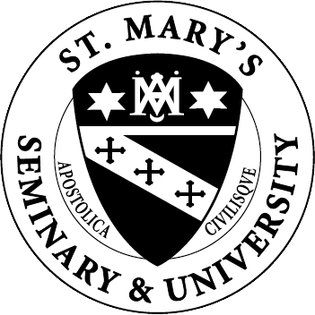
St. Mary's Seminary and University is a Roman Catholic seminary located within the Archdiocese of Baltimore in Baltimore, Maryland; it was the first seminary founded in the United States of America after the Revolution.
Saint Patrick's Seminary and University in Menlo Park, California is a Roman Catholic post-graduate seminary whose primary mission is the formation of clergy for Western and Pacific Rim dioceses. It is located on a historic, beautifully landscaped 40 acre campus in Menlo Park, California, 35 miles south of San Francisco, in the heart of Silicon Valley. Since its founding, on September 20, 1898, by San Francisco Archbishop Patrick William Riordan, with a faculty from the Sulpician order and thirty-four young men, the seminary and university has grown considerably. In over 100-years, it has formed more than 2,000 priests. This school is governed by the Archdiocese of San Francisco in association with its other sponsoring western and Pacific Rim dioceses.

The Seminaries of Saint Paul is the seminary system of the Roman Catholic Archdiocese of Saint Paul and Minneapolis. The Seminaries are made up of an undergraduate division – The Saint John Vianney College Seminary – and a graduate division – The Saint Paul Seminary. The Saint Paul Seminary also has graduate theology programs for non-seminarians in affiliation with the University of St. Thomas, called the Saint Paul Seminary School of Divinity. Together have over 200 seminarians studying for the Catholic priesthood, and the Saint Paul Seminary has over lay 600 students in graduate and non-degree seeking programs.

Saint John's Seminary, located in the Brighton neighborhood of Boston, Massachusetts, is a Catholic major seminary sponsored by the Roman Catholic Archdiocese of Boston.

St. Joseph Seminary is a Roman Catholic Seminary located in Edmonton, Alberta.

Jean Verdier, PSS was a French Cardinal of the Roman Catholic Church. He served as Archbishop of Paris from 1929 until his death, and was elevated to the cardinalate in 1929.

Emilius Goulet, PSS was the Roman Catholic Archbishop of St. Boniface in the Province of Manitoba, Canada. He was appointed Archbishop by Pope John Paul II on June 23, 2001 and was consecrated in the Cathedral Basilica of St. Boniface, Manitoba on September 13, 2001 by Jean-Claude Cardinal Turcotte, Archbishop of Montreal; Archbishop Maurice Couture, R.S.V.(Religieux de Saint Vincent de Paul), Archbishop of Quebec (City); and Archbishop James Vernon Weisgerber, Archbishop of Winnipeg.
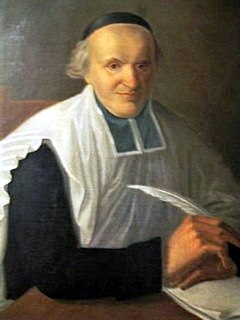
Jacques-André Emery, S.S., France, was a French priest of the Society of Saint-Sulpice, who served as its Superior General during the French Revolution.

St. John Fisher Seminary Residence is sponsored by the Roman Catholic Diocese of Bridgeport, Connecticut. Men between the ages of eighteen and forty live at the Seminary while studying subjects based on a liberal arts curriculum, especially philosophy and classical languages, in preparation for graduate theological studies outside of the Diocese. St. John Fisher seminarians are formed to be faithful, perceptive, and well-balanced men. The formation experience at the Seminary is meant to leave an imprint on conscience, character, and manners; it is meant to develop style and to nourish action.

The Roman Colleges, also referred to as the Pontifical Colleges in Rome, are institutions established and maintained in Rome for the education of future ecclesiastics of the Roman Catholic Church. Traditionally many were for students of a particular nationality. The colleges are halls of residence in which the students follow the usual seminary exercises of piety, study in private, and review the subjects treated in class. In some colleges there are special courses of instruction but the regular courses in philosophy and theology are given in a few large central institutions, such as Pontifical Urbaniana University, the Pontifical Gregorian University, the Pontifical Lateran University, and the Pontifical University of Saint Thomas Aquinas, Angelicum.

Saint John Vianney Theological Seminary is a Roman Catholic seminary in Denver, Colorado. The seminary is located at 1300 South Steele Street in the Cory-Merrill neighborhood of Denver, on the campus of the St. John Paul II Center for the New Evangelization.
The Right Reverend Stephen McGill PSS was the sixth Bishop of Argyll and the Isles and second Bishop of Paisley.
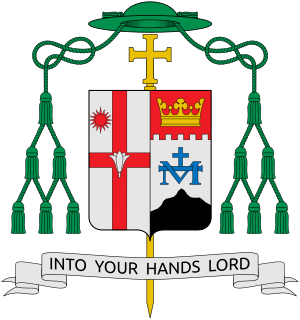
Thomas Anthony Daly is an American Roman Catholic bishop. He is the seventh Roman Catholic bishop of Spokane. He was appointed to this position on March 12, 2015 and was installed on May 20. Previously, he was the first Auxiliary Bishop of San José in California, USA.

Bishop Simon Bruté College Seminary is a Roman Catholic college seminary located in Indianapolis, Indiana, within the Archdiocese of Indianapolis. The seminary takes its name from Bishop Simon Bruté, first bishop of the Diocese of Vinncennes, who came to Vincennes, Indiana from Mount St. Mary's Seminary in Emmitsburg, Maryland, in 1834. Bishop Simon Bruté Seminary has provided college-level seminary formation since 2004. Seminarians from 8 dioceses across the Midwestern United States reside at the seminary and take classes at Marian University.

The Theological Seminary of Bogotá, commonly known as the Major Seminary of Bogotá is a Roman Catholic major seminary located in Bogotá, Colombia, and serving both the Archdiocese of Bogotá and the Diocese of Facatativá. With history dating back to 1581, it is the oldest seminary in the Americas, and today is the largest and most prominent seminaries in Colombia, with dozens of alumni having been appointed bishops, archbishops, and cardinals. In addition to religious leaders, two Colombian presidents have been associated with the seminary. José Manuel Marroquín, the 27th President of Colombia, studied there in the 1840s, and Miguel Abadía Méndez, who was president in the 1920s, taught Latin at the seminary in the early 20th century.



